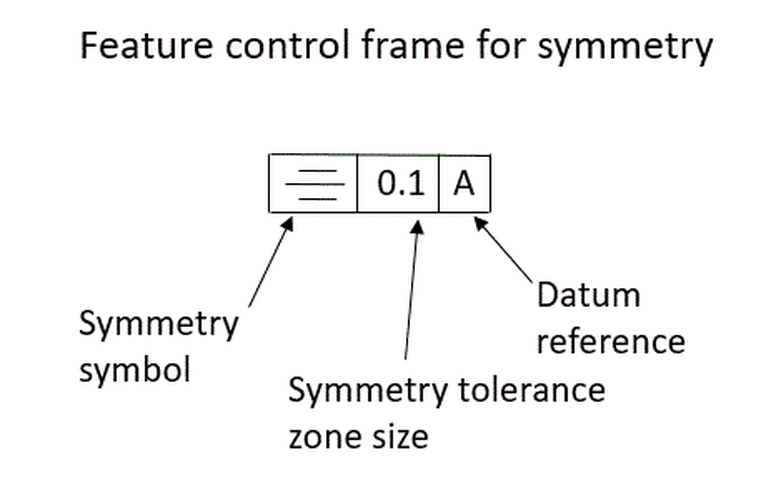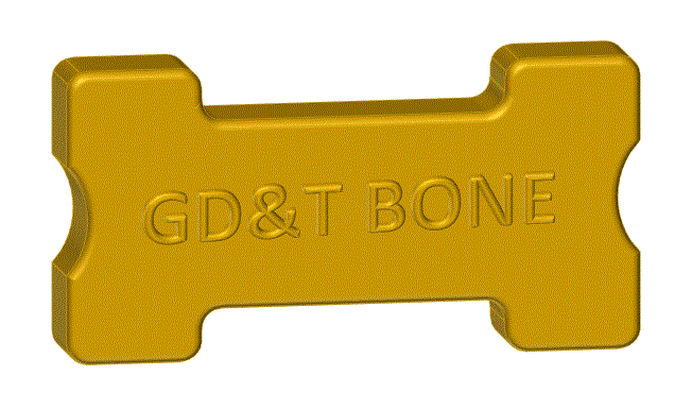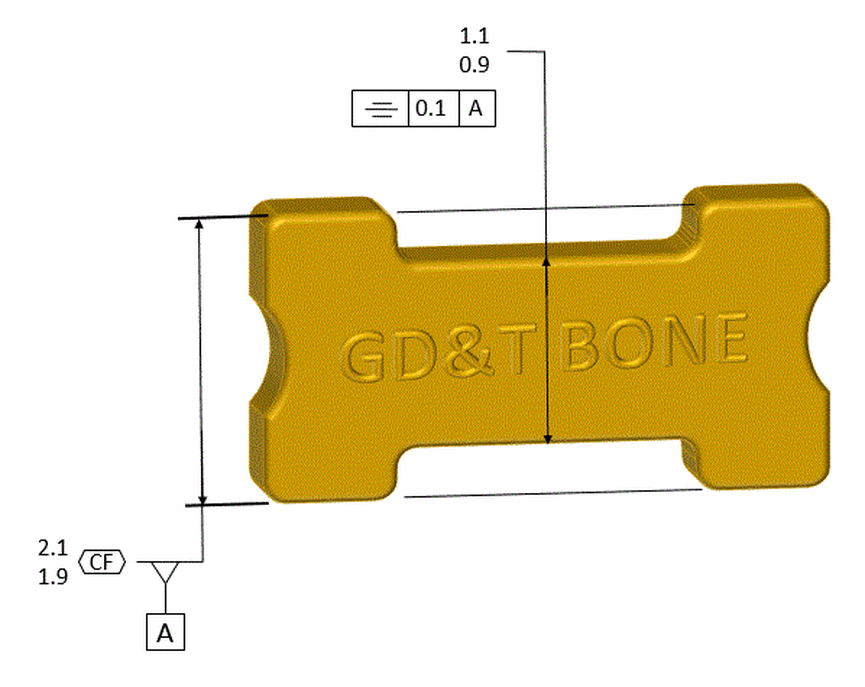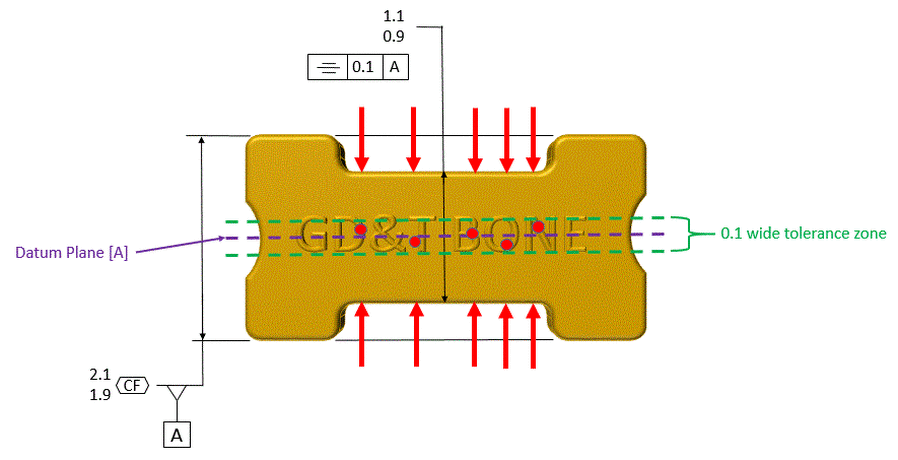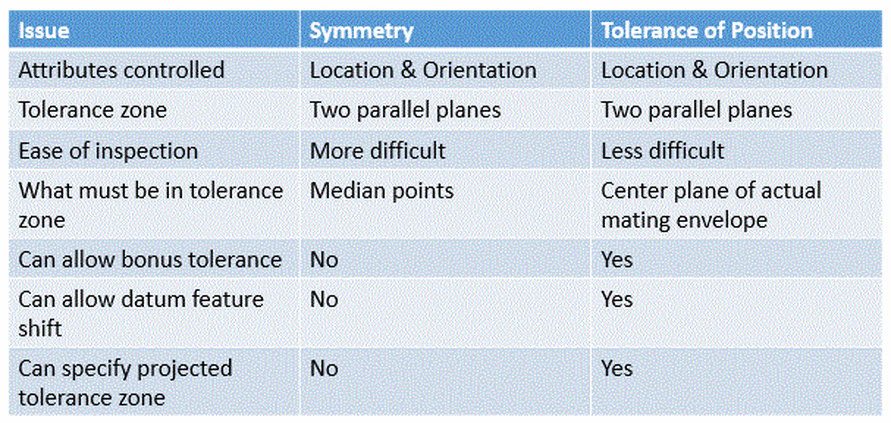Symmetry
The feature control frame for Symmetry is shown below:
In this chapter we will discuss what Symmetry is and why it is better to use Tolerance of Position rather than Symmetry. This is difficult for many people to accept because symmetry sounds so intuitively correct for centering a part relative to another part. But when we really understand what Symmetry does and how it is measured, we will realize that Tolerance of Position is a better choice.
We can see below an application for Symmetry. We want to manufacture a high quality brand of dog biscuits that we will call "GD&T Bone."
We want the long portion of the biscuit to be nicely centered between the thicker portions at the ends of the biscuit.
We can see below an application for Symmetry. We want to manufacture a high quality brand of dog biscuits that we will call "GD&T Bone."
We want the long portion of the biscuit to be nicely centered between the thicker portions at the ends of the biscuit.
We use a Symmetry control to specify how tightly the long portion must be centered within the end portions. The end portions establish our datum plane. We use the Continuous Feature callout (the CF inside the hexagon) in order to establish that both ends act together as if they were one continuous feature. The datum plane then is the centerplane between two parallel planes that would fit over our datum feature (the centerplane of the unrelated actual mating envelope).
The symmetry requirement says that we have a 0.1 wide tolerance zone which is the space between two parallel planes that are 0.1 apart and centered about the datum plane.
Now we must take a series of two point measurements (theoretically an infinite number of them) and observe where the midpoints of the two point measurements fall. The midpoints of the two point measurements must all fall within the tolerance zone established by the two parallel planes that are 0.1 apart and centered about the datum plane.
The red arrows below represent the two point measurements. The red dots represent the midpoints of the two point measurements.
Now we must take a series of two point measurements (theoretically an infinite number of them) and observe where the midpoints of the two point measurements fall. The midpoints of the two point measurements must all fall within the tolerance zone established by the two parallel planes that are 0.1 apart and centered about the datum plane.
The red arrows below represent the two point measurements. The red dots represent the midpoints of the two point measurements.
The relevant question then is what are the pros and cons of using symmetry vs. tolerance of position. The chart below compares symmetry and tolerance of position.
We see that both control the same attributes.
Both have the same tolerance zone.
Symmetry is more difficult/more expensive to inspect than tolerance of position. This is because in symmetry one must determine whether or not median points fall within a tolerance zone. That's more difficult than determining whether or not a center plane falls within the tolerance zone.
Symmetry does not allow bonus, datum feature shift, or projected tolerance zone. Tolerance of position does allow all of these.
So the question is, why would we choose to use symmetry when we could use tolerance of position?
We see that both control the same attributes.
Both have the same tolerance zone.
Symmetry is more difficult/more expensive to inspect than tolerance of position. This is because in symmetry one must determine whether or not median points fall within a tolerance zone. That's more difficult than determining whether or not a center plane falls within the tolerance zone.
Symmetry does not allow bonus, datum feature shift, or projected tolerance zone. Tolerance of position does allow all of these.
So the question is, why would we choose to use symmetry when we could use tolerance of position?

